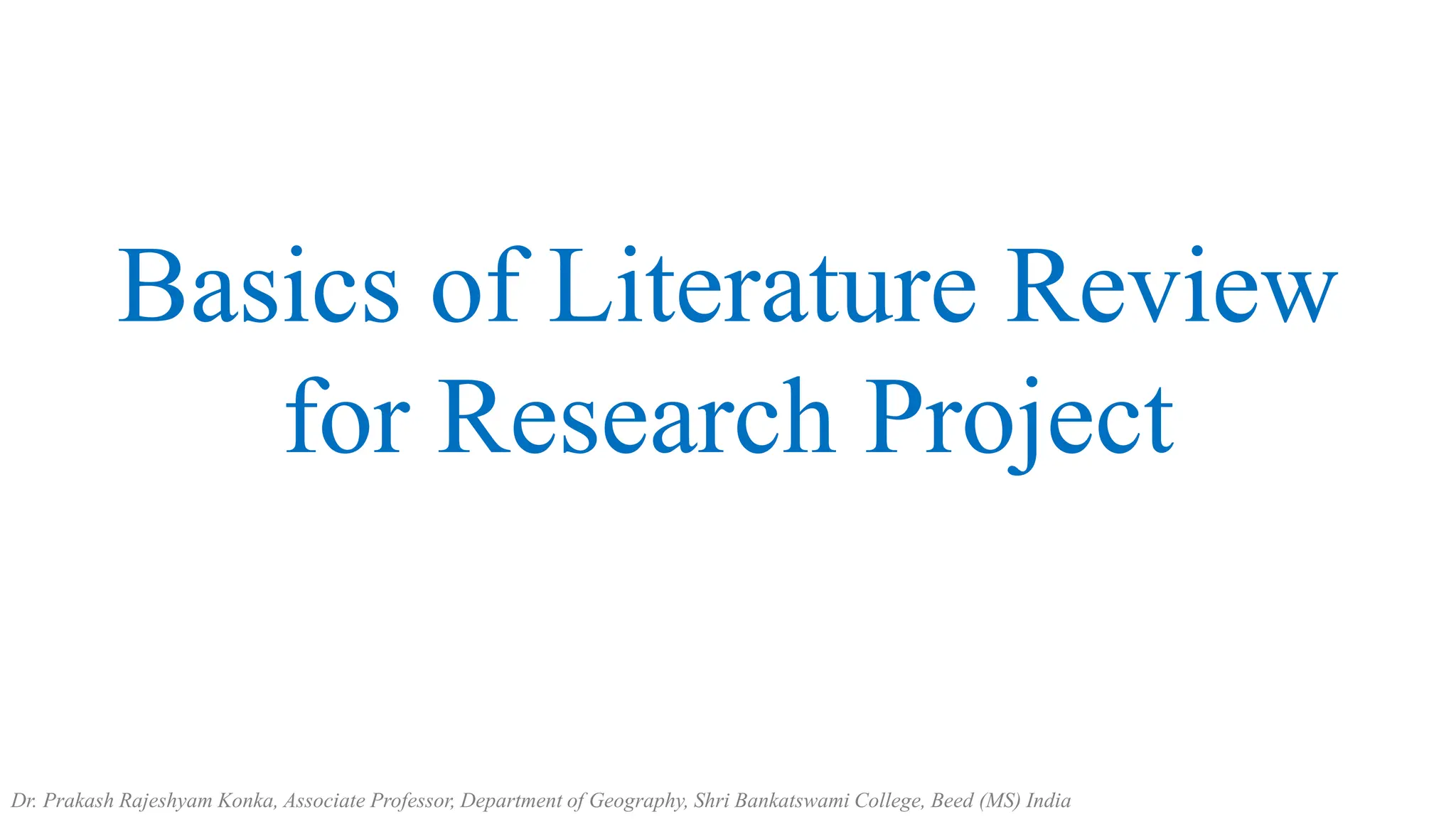The document outlines essential steps for mastering research, including selecting a topic, conducting literature reviews, and writing research proposals and projects. It emphasizes criteria for choosing research topics, the importance of literature review, and detailed guidelines for proposal writing, differentiating major and minor research projects. Additionally, it addresses the University Grants Commission's initiative on promoting quality research and avoiding predatory journals.



































